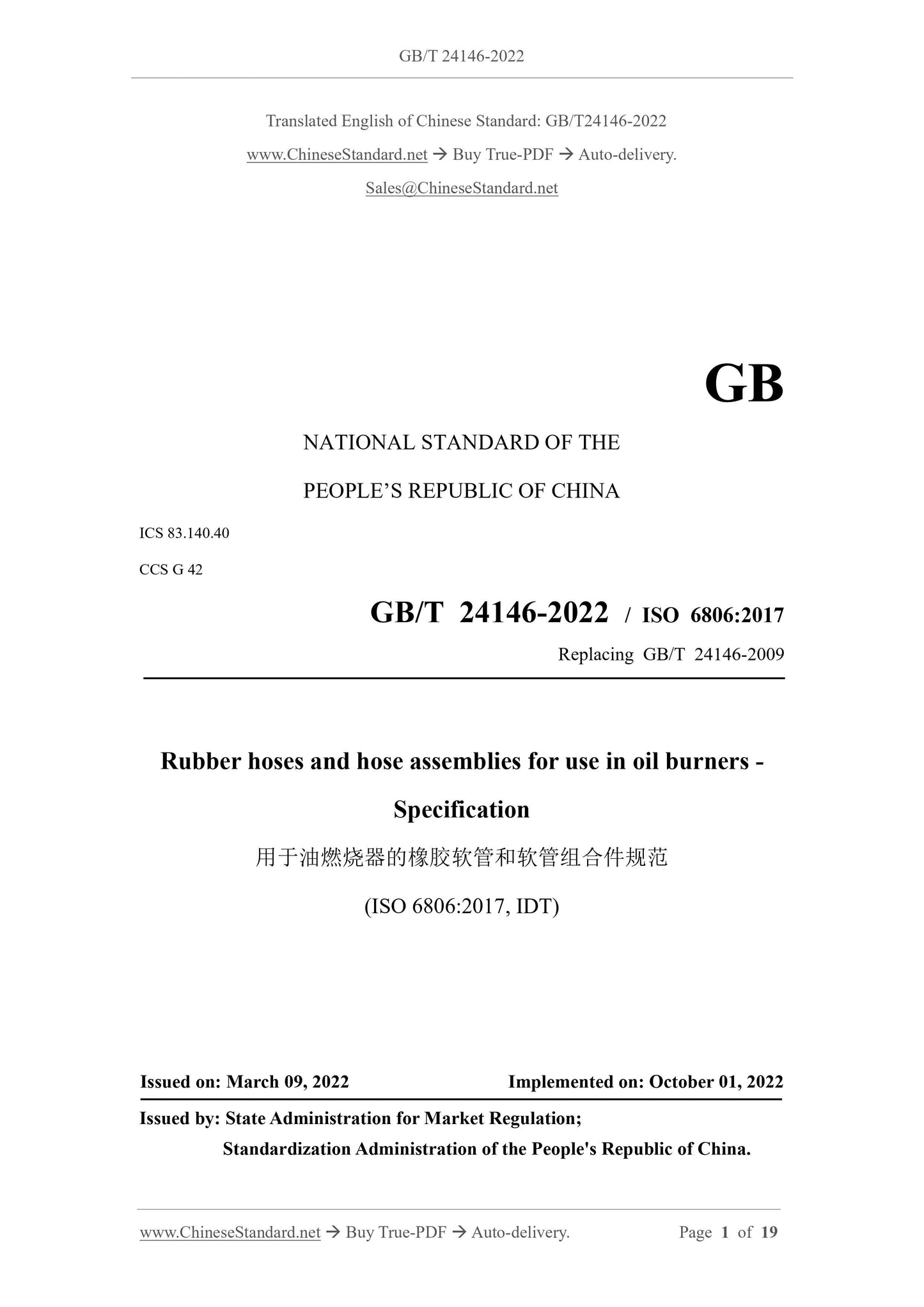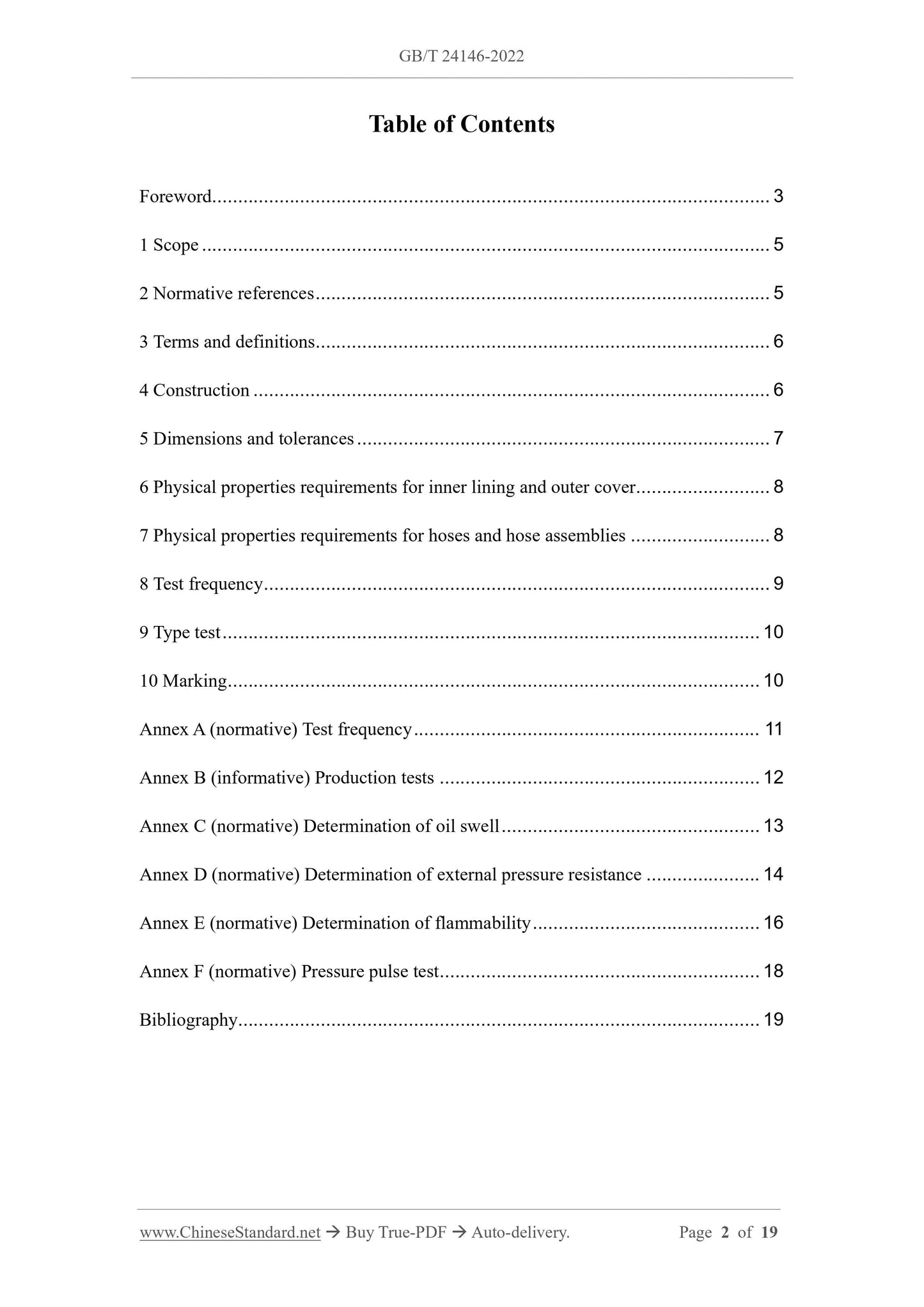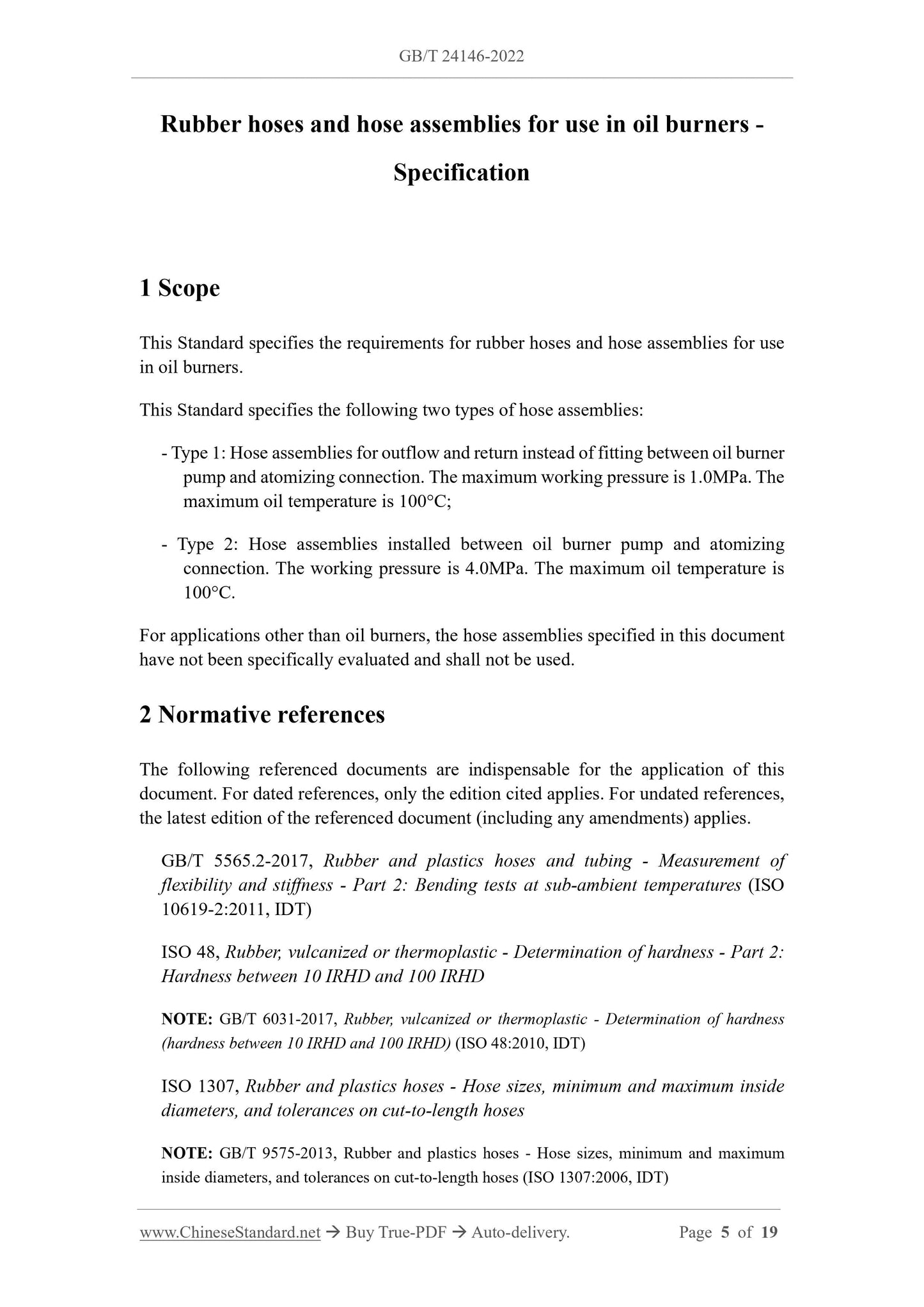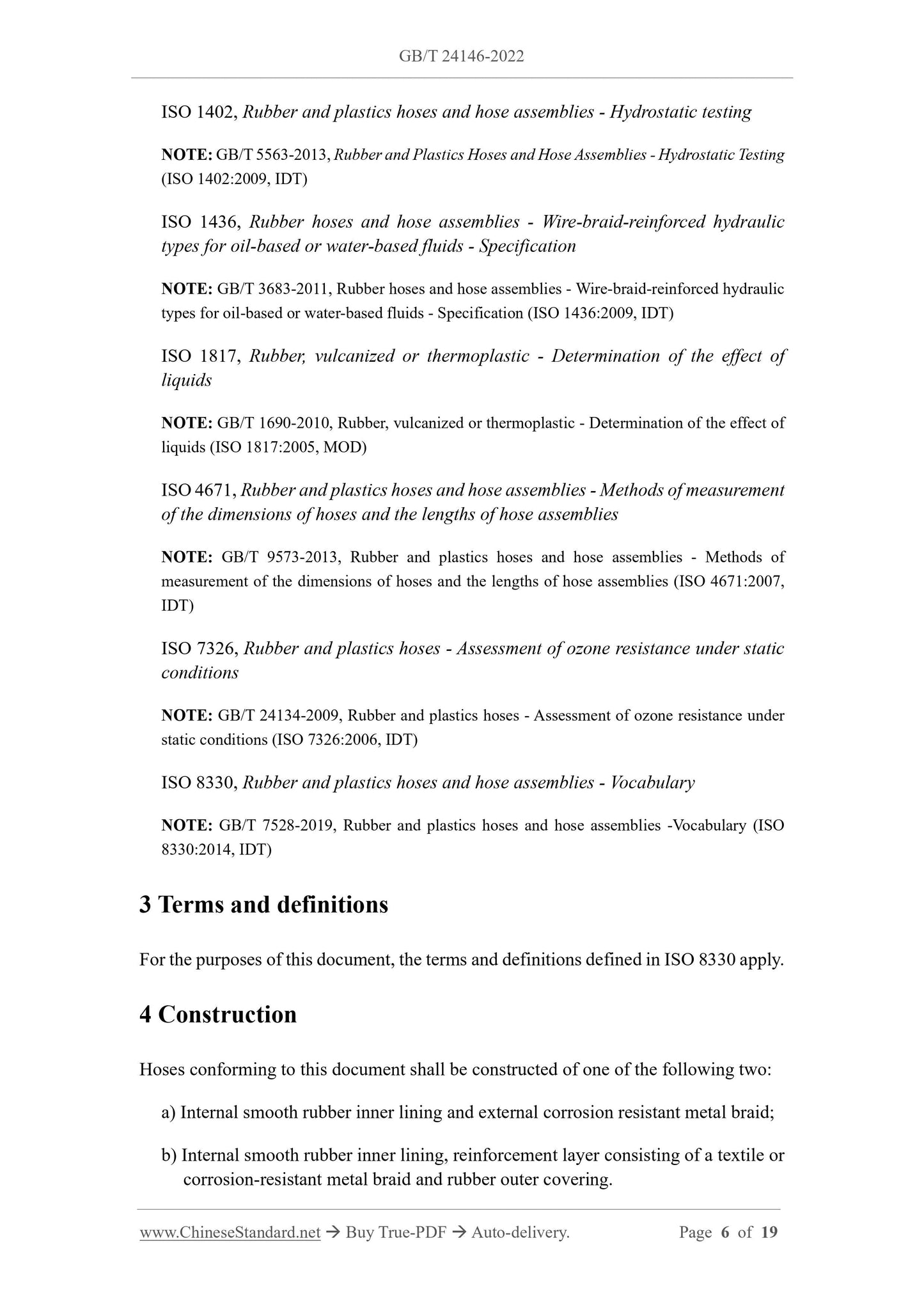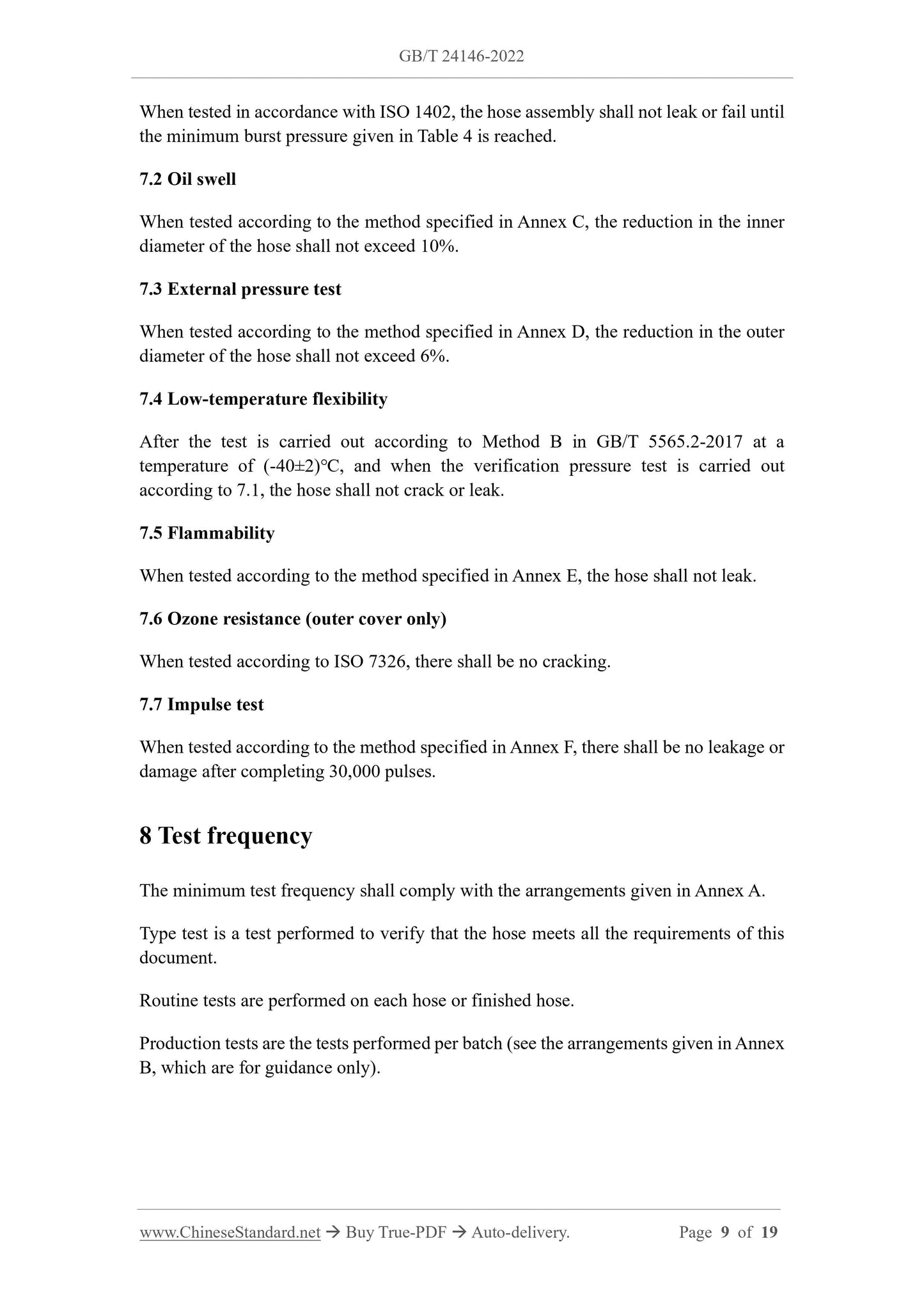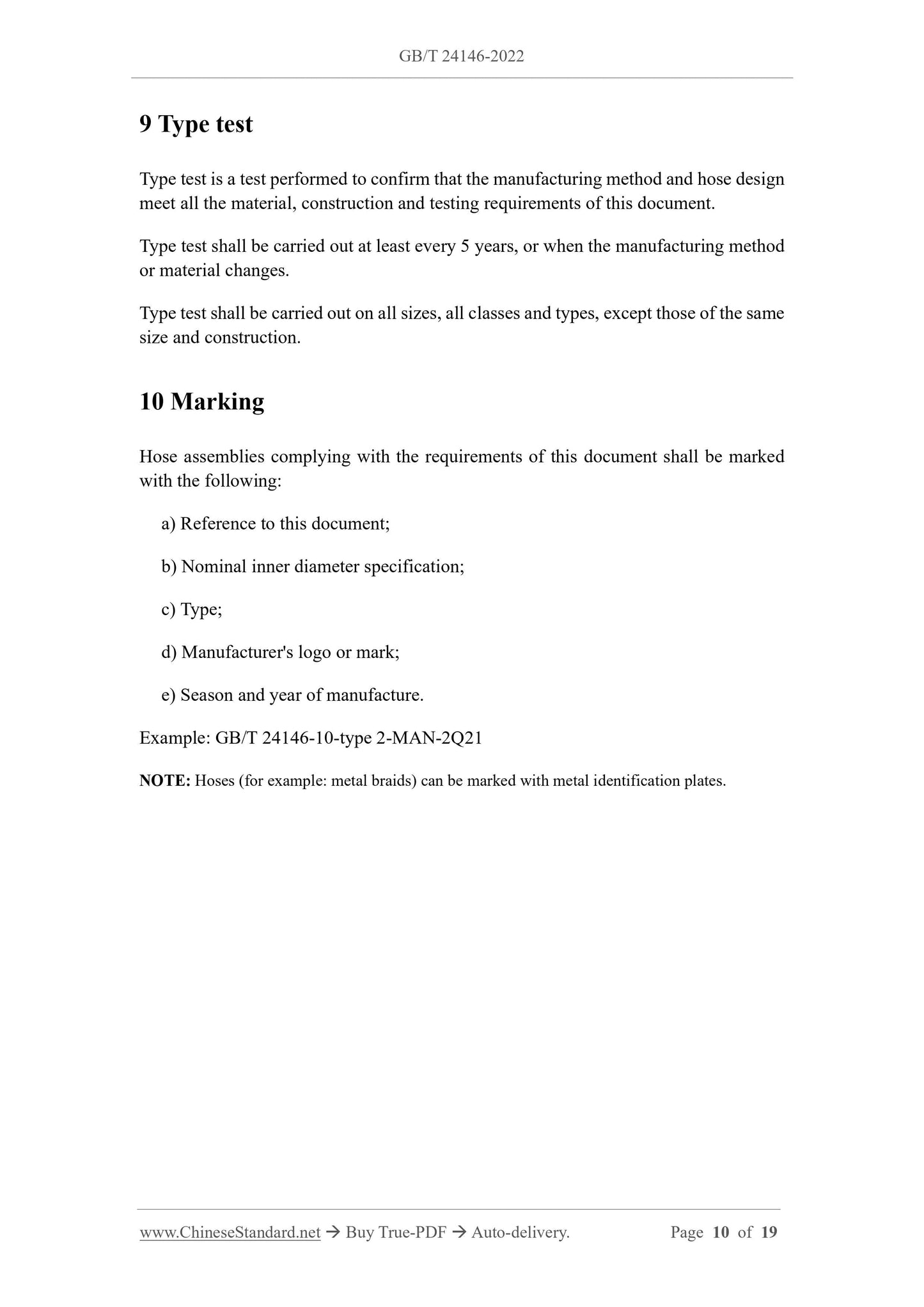1
/
of
6
www.ChineseStandard.us -- Field Test Asia Pte. Ltd.
GB/T 24146-2022 English PDF (GB/T24146-2022)
GB/T 24146-2022 English PDF (GB/T24146-2022)
Regular price
$230.00
Regular price
Sale price
$230.00
Unit price
/
per
Shipping calculated at checkout.
Couldn't load pickup availability
GB/T 24146-2022: Rubber hoses and hose assemblies for use in oil burners - Specification
Delivery: 9 seconds. Download (and Email) true-PDF + Invoice.Get Quotation: Click GB/T 24146-2022 (Self-service in 1-minute)
Newer / historical versions: GB/T 24146-2022
Preview True-PDF
Scope
This Standard specifies the requirements for rubber hoses and hose assemblies for usein oil burners.
This Standard specifies the following two types of hose assemblies:
- Type 1: Hose assemblies for outflow and return instead of fitting between oil burner
pump and atomizing connection. The maximum working pressure is 1.0MPa. The
maximum oil temperature is 100°C;
- Type 2: Hose assemblies installed between oil burner pump and atomizing
connection. The working pressure is 4.0MPa. The maximum oil temperature is
100°C.
For applications other than oil burners, the hose assemblies specified in this document
have not been specifically evaluated and shall not be used.
Basic Data
| Standard ID | GB/T 24146-2022 (GB/T24146-2022) |
| Description (Translated English) | Rubber hoses and hose assemblies for use in oil burners - Specification |
| Sector / Industry | National Standard (Recommended) |
| Classification of Chinese Standard | G42 |
| Word Count Estimation | 14,136 |
| Issuing agency(ies) | State Administration for Market Regulation, China National Standardization Administration |
Share
